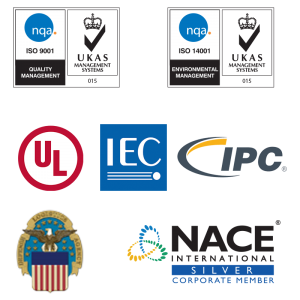
It’s common knowledge that colder temperatures can impact the curing of coatings. To achieve the optimum performance properties of the coating, special attention to the manufacturer’s application guidelines is needed.
Applications at colder temperatures, or below the manufacturer’s recommendations, require experienced contractors who are familiar with CIM products.
Smart tips for cold weather applications:
- Plan ahead. Air and surface temperatures will affect the working and cure times of the coating.
- Monitor temperatures. On cold, rainy, and windy days, the dew point and wind chill, can account for moisture in the air as well as moisture formation on the substrate.
- CIM coatings should be applied only when the substrate temperature is no less than 5°F above the dew point. Continually monitor the air and surface temperatures, dew point, and humidity levels. If the surface temperature readings continue to encroach upon the 5°F differential, then the coating application should stop, and you should contact your local CIM representative for instructions.
- The substrate must be dry. Condensation can occur more rapidly at lower temperatures, particularly as surface temperatures approach the dew point.
- Check for and avoid frost within the substrate when substrate temperatures fall below 32°F.
- The viscosity of CIM will increase as the temperature decreases. Increased viscosity results in a material that can be difficult to apply. Applications at lower temperatures should be carried out as if the working time were considerably shorter than it is at 60°F.
- The premix and activator should be preheated, typically 1°F above 60°F for each degree that the substrate will be below 50°F. As product temperatures are increased, the working time will be shortened.
- Heated or insulated lines may be required to maintain these temperatures when spraying CIM products.
- Material cure times and solvent loss rates are much slower at lower temperatures. CIM products typically cure within several hours at 70°F but may take up to a week, possibly longer, to reach the same level of cure at 20°F.
- The minimum time required between coats increases with lower temperatures.
- Slower cure times limit the amount of material that can be applied to a vertical surface because CIM products will continue to flow for an extended period. Vertical surfaces can be coated with only 15 to 20 mils at a time or significant sags and runs may occur. These surfaces may require at least three coats to achieve the recommended thickness.
- CIM’s Epoxy Moisture Tolerant Primer can be applied in temperatures as low as 40°F; otherwise, utilization of an epoxy primer may need to be excluded at low temperatures.
- DOCUMENT your environmental conditions.
- When in doubt, the best solution is to delay the start of the project until the weather gets warmer.
Related article: Winter Waterproofing: Cold Weather Tips for Applying CIM Membranes
CIM's cold weather application guidelines and product checklists are available for utilization throughout the coating application process.
If you have any questions, feel free to contact our support team.
CIM's two-part urethane fluid applied liners and coatings have been keeping liquids where they belong for over 35 years. Our team of technical consultants is available to assist you with product information to meet your coating needs. Please contact us.





